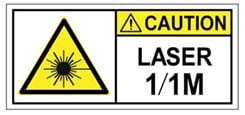Revision History
|
Date |
Notes |
|---|---|
|
May 2020 |
Updated for Release 11.1.1.2 |
|
October 2019 |
Updated for Release 11.1 |
|
March 2019 |
Updated for Release 11.0 |
|
August 2018 |
Updated for Release 10.9 |
|
December 2017 |
Updated for Release 10.8 |
|
October 2017 |
Updated for Release 10.7 |
|
April 2017 |
Updated for Release 10.6.2 |
|
November 2016 |
Updated for Release 10.6.1 |
|
June 2016 |
Updated for Release 10.6 |
|
January 2016 |
Updated for Release 10.5.2 |
|
July 2015 |
Updated for Release 10.5 |
|
December 2014 |
Added content for Duplicate Node Controller in the chapter "Managing the Shelf". |
|
March 2014 |
Revised the part number and included Release 10.0.1 enhancements. |
|
November 2013 |
This is the first release of this publication. |




















 Statement 291
Statement 291
 Feedback
Feedback